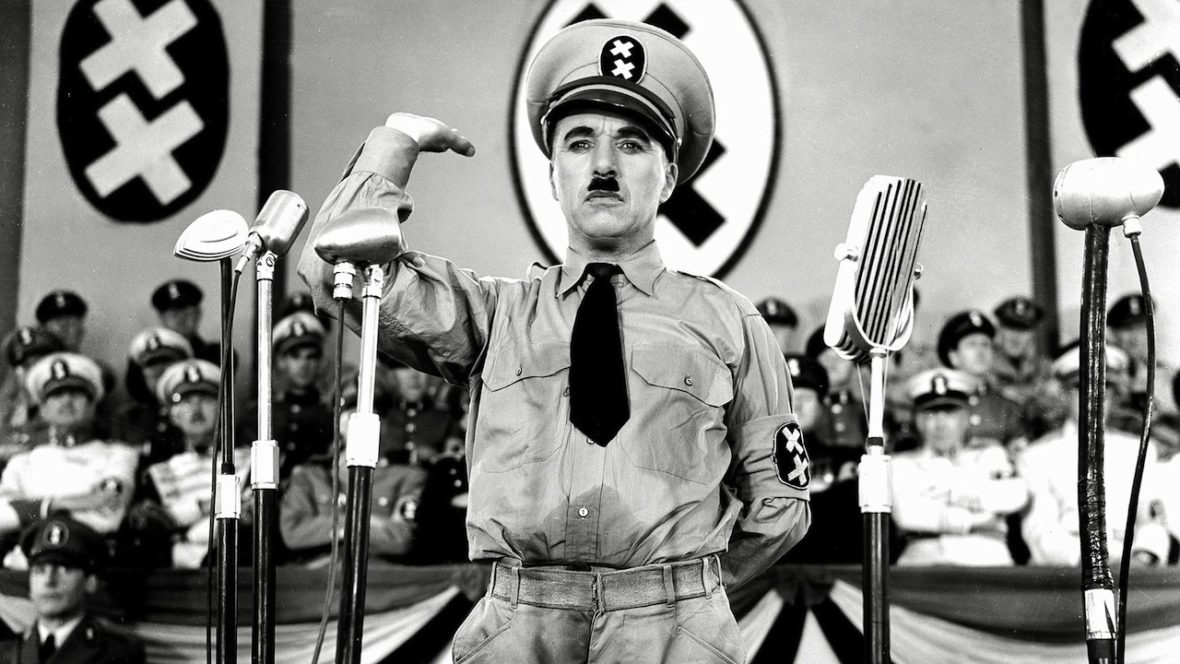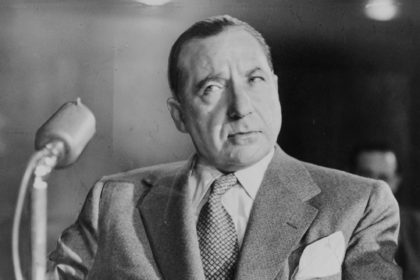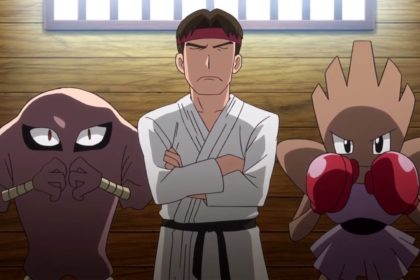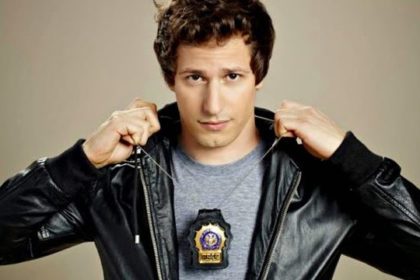The Great Dictator is a 1940 American political satire comedy-drama movie written, directed, produced, scored by and starring Charlie Chaplin, following the tradition of his many other movies. Having been the only Hollywood filmmaker to continue to make silent movies well into the period of sound movies, this was Chaplin’s first true sound movie. Take a look below for 30 more interesting and fascinating facts about The Great Dictator.
1. Charlie Chaplin’s movie advanced a stirring, controversial condemnation of Adolf Hitler, Benito Mussolini, fascism, antisemitism and the Nazis. At the time of its fist release, the United States was still formally at peace with Nazi Germany.
2. The Great Dictator was popular with audiences, becoming Charlie Chaplin’s most commercially successful movie.
3. In 1997, the movie was selected by the Library of Congress for preservation in the United States National Film Registry as being, “culturally, historically or aesthetically significant.”
4. The Great Dictator was nominated for five Academy Awards: Outstanding Production, Best Actor, Best Writing (Original Screenplay), Best Supporting Actor for Jack Oakie, and Best Must (Original Score).
5. In his 1964 autobiography, Charlie Chaplin stated that he would not have made the movie if he had known about the true extent of the horrors of the Nazi concentration camps at the time.
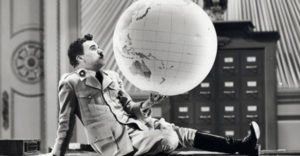
6. Adolf Hitler banned the movie in Germany and in all countries occupied by the Nazis. Curiosity got the best of him, and he had a print brought in through Portugal. There are accounts that he watched it twice, but there are no accounts of his reaction to the movie. Charlie Chaplin said, “I’d give anything to know what he thought of it.”
7. According to documentaries on the making of the movie, Charlie Chaplin began to feel more uncomfortable lampooning Adolf Hitler the more he heard of Hitler’s actions in Europe. Ultimately, the invasion of France inspired Chaplin to change the ending of his movie to include his famous speech.
8. The movie was financed entirely by Charlie Chaplin himself, and it was his biggest box-office hit.
9. Charlie Chaplin wrote the entire script in script form, except for the fake German, which was improvised. In addition, he also scripted every movement in the globe dance sequence.
10. Charlie Chaplin accepted an invitation to perform the movie’s climactic speech on national radio.
11. In Spain, the movie was banned until dictator Francisco Franco died, in 1975. It would be released there in April, 1976.
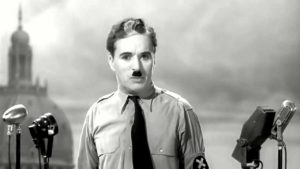
12. In Italy, all the scenes that involved Napaloni’s wife were cut from the movie to respect Benito Mussolini’s widow, Rachele. The complete version wasn’t seen until 2002.
13. Charlie Chaplin said that wearing Hynkel’s costume made him feel more aggressive, and those close to him remember him being more difficult to work with on days he was shooting as Hynkel.
14. The German spoken by the dictator is complete nonsense. The language in which the shop signs and posters in the “Jewish” quarter are written in Esperanto, a language created in 1887 by Dr. L.L. Zamenhof, a Polish Jew.
15. Douglas Fairbanks visited the set of the movie in 1939, and laughed almost uncontrollably at the scene that was being played. He waved goodbye to Charlie Chaplin and left. He was dead within a week and it was the last time Chaplin would see him.
16. Charlie Chaplin blinks fewer than ten times during the entire final speech, which lasts over five minutes.
17. When President Franklin D. Roosevelt had heard that studios were trying to discourage Charlie Chaplin from making the movie, he sent a representative, Harry Hopkins, to Chaplin to encourage him to make the movie.
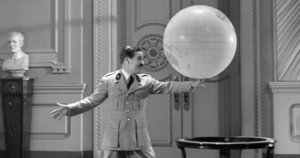
18. General Dwight D. Eisenhower personally requested French dubbed versions of The Great Dictator from Charlie Chaplin, for distribution in France after the Allied victory there.
19. Some of Charlie Chaplin’s associated tried to talk him out of the final speech about peace. One film salesman said that the speech would cost him a million dollars at the box office. Chaplin replied, “Well, I don’t care if it’s five million.”
20. Charlie Chaplin cast his wife Paulette Goddard as the female lead, playing a cleaner. He insisted that she scrub the floor of the whole set only for her to refuse. Chaplin stopped filming until she agreed to do so.
21. Production on the movie started in 1937, when not nearly as many people believed that Nazism was a menace, as was the case when it was released in 1940. However, this movie was ultimately upstaged as the first anti-Nazi film satire by The Three Stooges production You Nazty Spy!, which was released nine months earlier.
22. Color behind the scenes footage exists, including the only footage of an aborted ending in which soldiers break into a folk dance.
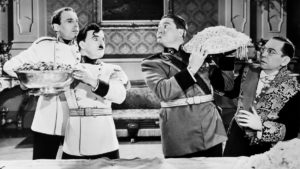
23. Jack Oakie once said that he, “had made hundreds of pictures, but they only remember me as Napaloni in The Great Dictator.”
24. Charlie Chaplin named Paulette Goddard’s character after his mother, Hannah.
25. When Charlie Chaplin’s young son, Sydney Chaplin, saw the scene where the artillery shell drops out of the supergun for the first time, he burst out laughing. It ruined the take.
26. Charlie Chaplin spent some time trying to simulate the sound of an airplane motor with various methods, only to be upstaged by one of his sound technicians, who went to the airport and recorded the sound of a real plane.
27. Charlie Chaplin spent hours studying Adolf Hitler movies to perfect an imitation of his speaking style. He would eventually do this with a combination of nonsense syllables and isolated German words.
28. The scenes where Charlie Chaplin dances with a globe had its origins in a 1928 home movie in which Chaplin also toyed with a globe in similar fashion.
29. According to his biographer, David Robinson, Charlie Chaplin despised script girls and refused to abide by their guidance, resulting in continuity lapses in the movie.
30. The barber’s scenes were mostly shot in the slower speed used for silent movies, which was 16 frames per second, made possible by the fact that Charlie Chaplin gave the character less dialogue than Hynkel, who was shot in the standard speed for the sound movie.

